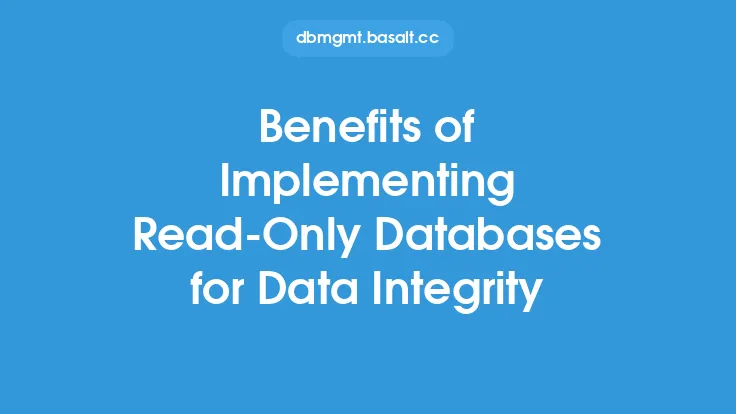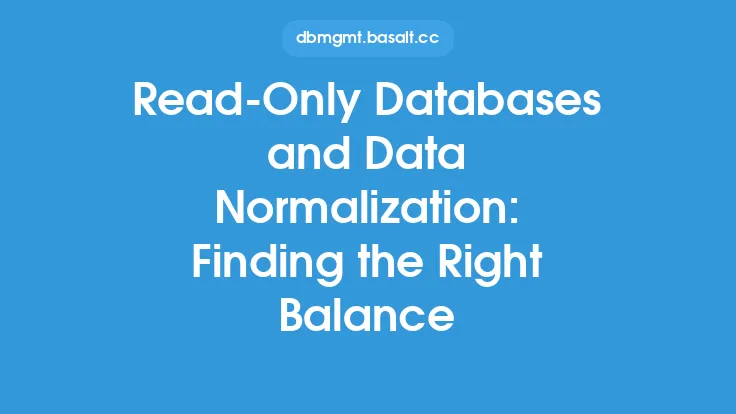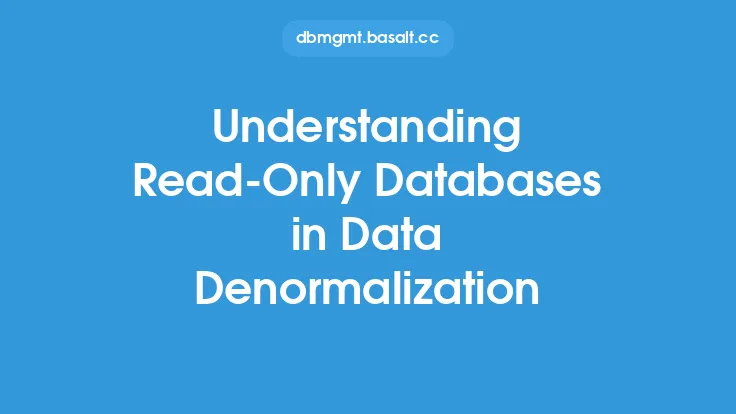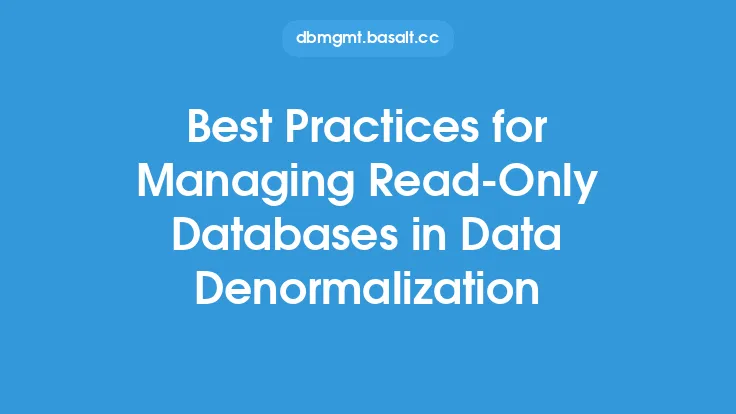In the realm of data management, ensuring data consistency is a critical aspect of maintaining the integrity and reliability of a database. One approach to achieving this goal is through the use of read-only databases, which play a vital role in preventing data inconsistencies and errors. A read-only database is a type of database that allows users to only retrieve data, without the ability to modify or update it. This restriction helps to maintain data consistency by preventing unauthorized or accidental changes to the data.
Introduction to Read-Only Databases
Read-only databases are designed to provide a stable and consistent view of the data, which is essential for applications that require accurate and reliable information. By restricting access to the data and preventing modifications, read-only databases help to prevent data corruption, inconsistencies, and errors. This is particularly important in applications where data is critical, such as financial transactions, medical records, or scientific research.
How Read-Only Databases Ensure Data Consistency
Read-only databases ensure data consistency by preventing modifications to the data, which helps to maintain the integrity and accuracy of the information. When data is modified, there is a risk of introducing errors or inconsistencies, which can have serious consequences. By restricting access to the data and preventing modifications, read-only databases help to prevent these types of errors and ensure that the data remains consistent and reliable.
In addition to preventing modifications, read-only databases also help to ensure data consistency by providing a single, unified view of the data. This is particularly important in distributed database systems, where data may be replicated across multiple nodes. By providing a read-only view of the data, read-only databases help to ensure that all nodes have a consistent view of the data, which helps to prevent inconsistencies and errors.
Technical Implementation of Read-Only Databases
From a technical perspective, read-only databases can be implemented in a variety of ways, depending on the specific requirements of the application. One common approach is to use a combination of database replication and access control mechanisms to restrict access to the data and prevent modifications. For example, a database administrator may create a read-only replica of a database, which is updated periodically from the master database. This approach helps to ensure that the read-only database remains consistent with the master database, while also providing a stable and consistent view of the data.
Another approach to implementing read-only databases is to use database views or snapshots, which provide a read-only view of the data. Database views are virtual tables that are based on the result of a query, while database snapshots are read-only copies of a database that are updated periodically. Both of these approaches help to provide a consistent and reliable view of the data, while also preventing modifications and ensuring data consistency.
Benefits of Using Read-Only Databases
The use of read-only databases provides a number of benefits, including improved data consistency, reduced risk of data corruption, and increased reliability. By preventing modifications to the data, read-only databases help to ensure that the data remains accurate and reliable, which is critical for applications where data is essential. Additionally, read-only databases help to reduce the risk of data corruption and errors, which can have serious consequences.
In addition to these benefits, read-only databases also provide improved performance and scalability, particularly in distributed database systems. By providing a read-only view of the data, read-only databases help to reduce the load on the database and improve query performance, which is critical for applications where data retrieval is frequent.
Challenges and Limitations of Read-Only Databases
While read-only databases provide a number of benefits, there are also challenges and limitations to their use. One of the main challenges is ensuring that the read-only database remains consistent with the master database, particularly in distributed database systems. This requires careful planning and management of the database replication and access control mechanisms, as well as regular updates to the read-only database.
Another challenge is ensuring that the read-only database provides adequate performance and scalability, particularly in applications where data retrieval is frequent. This may require careful optimization of the database and query performance, as well as the use of advanced database technologies such as caching and indexing.
Conclusion
In conclusion, read-only databases play a critical role in ensuring data consistency and preventing data inconsistencies and errors. By restricting access to the data and preventing modifications, read-only databases help to maintain the integrity and accuracy of the information, which is essential for applications where data is critical. While there are challenges and limitations to the use of read-only databases, the benefits of improved data consistency, reduced risk of data corruption, and increased reliability make them an essential tool in the realm of data management. As data continues to grow in importance and complexity, the use of read-only databases will become increasingly critical to ensuring the integrity and reliability of database systems.





